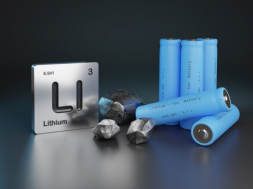
In Short : Coal continues to dominate Asia’s power sector, contributing 54% to the region’s electricity mix despite rising clean energy investments. Experts see ammonia co-firing in coal plants as a transitional tool to cut emissions while ensuring energy security. Countries like Japan and South Korea are advancing pilot projects, balancing climate commitments with economic and supply challenges.
In Detail : Coal remains the backbone of Asia’s power generation, accounting for 54% of the total electricity mix across the region. Despite ambitious renewable energy targets, the heavy reliance on coal highlights both the growing energy demand and challenges in transitioning to cleaner sources. Governments are striving to balance energy security with decarbonization goals.
Ammonia co-firing is emerging as a practical transition tool in Asia’s energy landscape. By blending ammonia with coal in existing power plants, emissions can be reduced without entirely shutting down coal-based assets. This approach offers a cost-effective pathway toward lower carbon intensity. Japan and South Korea are leading in this field.
The co-firing process enables coal plants to operate with fewer emissions, leveraging existing infrastructure while introducing cleaner fuels. Ammonia, which contains no carbon, helps displace part of coal usage and reduces overall CO₂ output. This makes it attractive for countries with significant coal dependence.
Japan has already begun pilot projects using ammonia co-firing in thermal plants. These projects are crucial to demonstrate scalability and efficiency in real-world conditions. The government is investing heavily in research and technology development to position ammonia as a mainstream energy solution.
South Korea is also exploring ammonia co-firing as part of its clean energy strategy. It aims to gradually integrate ammonia into its coal fleet, reducing emissions without risking power shortages. Collaborative efforts between industry and government are ensuring progress in this transition.
China, the largest consumer of coal, is observing these developments closely. While it is scaling up renewables at an unprecedented pace, its massive coal fleet continues to pose challenges. Ammonia co-firing could eventually play a role in China’s strategy to meet its climate commitments.
The adoption of ammonia co-firing also relies on building a sustainable supply chain. Producing green ammonia requires renewable energy, making its cost and scalability critical factors. Investment in infrastructure and technology will determine how quickly Asia can integrate this solution.
Environmental experts caution that while ammonia co-firing reduces emissions, it is not a complete replacement for coal. The ultimate goal remains transitioning to fully renewable and zero-carbon systems. However, as an interim step, it provides a vital bridge to cleaner power.
With rising energy demand and climate pressures, Asia faces a dual challenge of ensuring affordable electricity while cutting emissions. Ammonia co-firing represents a compromise—allowing countries to reduce their coal reliance gradually. Its success could shape the region’s pathway toward a sustainable energy future.













